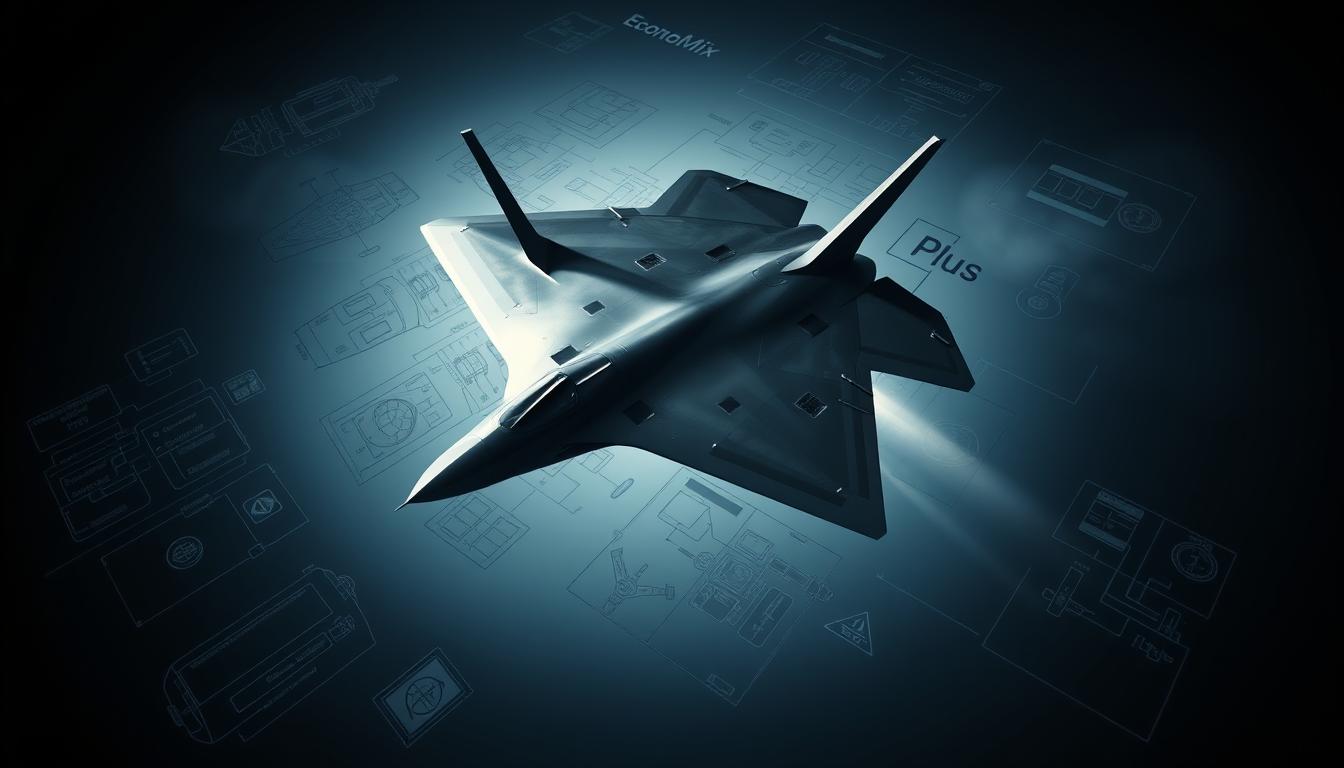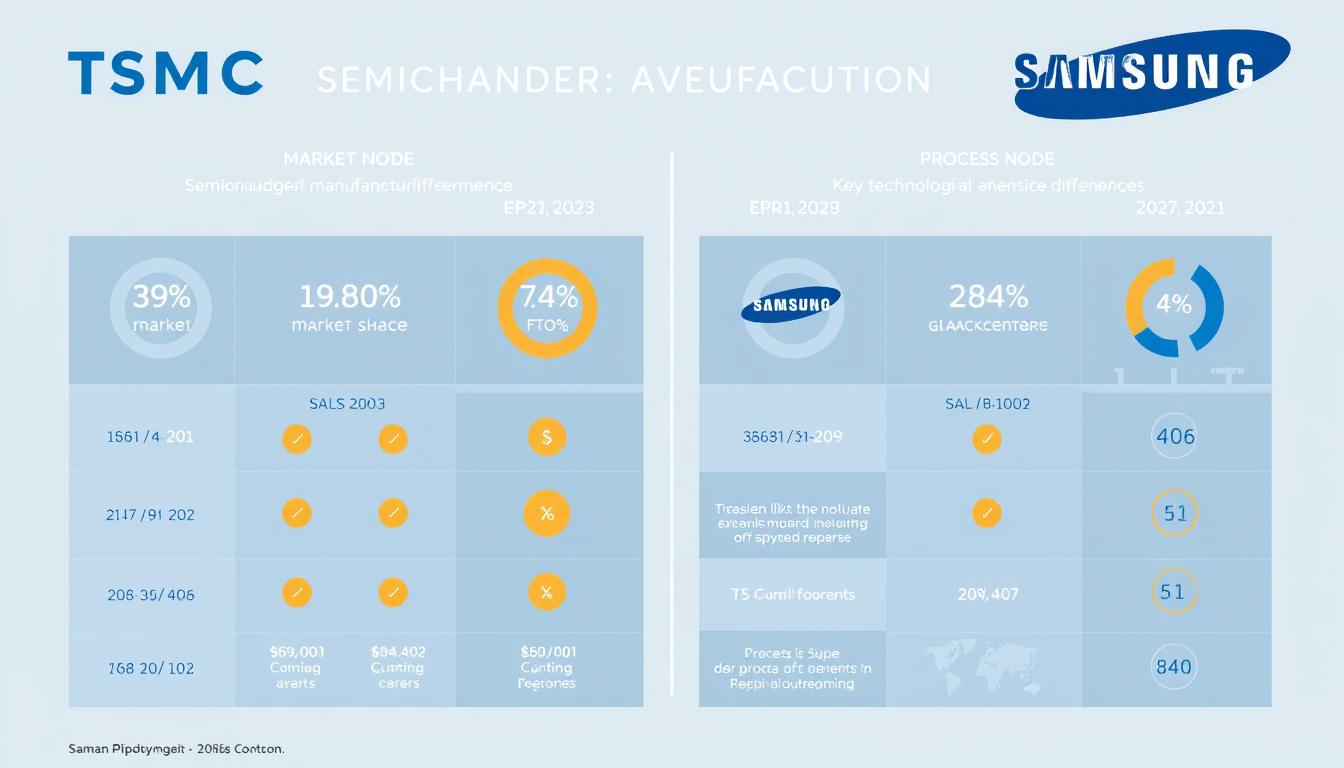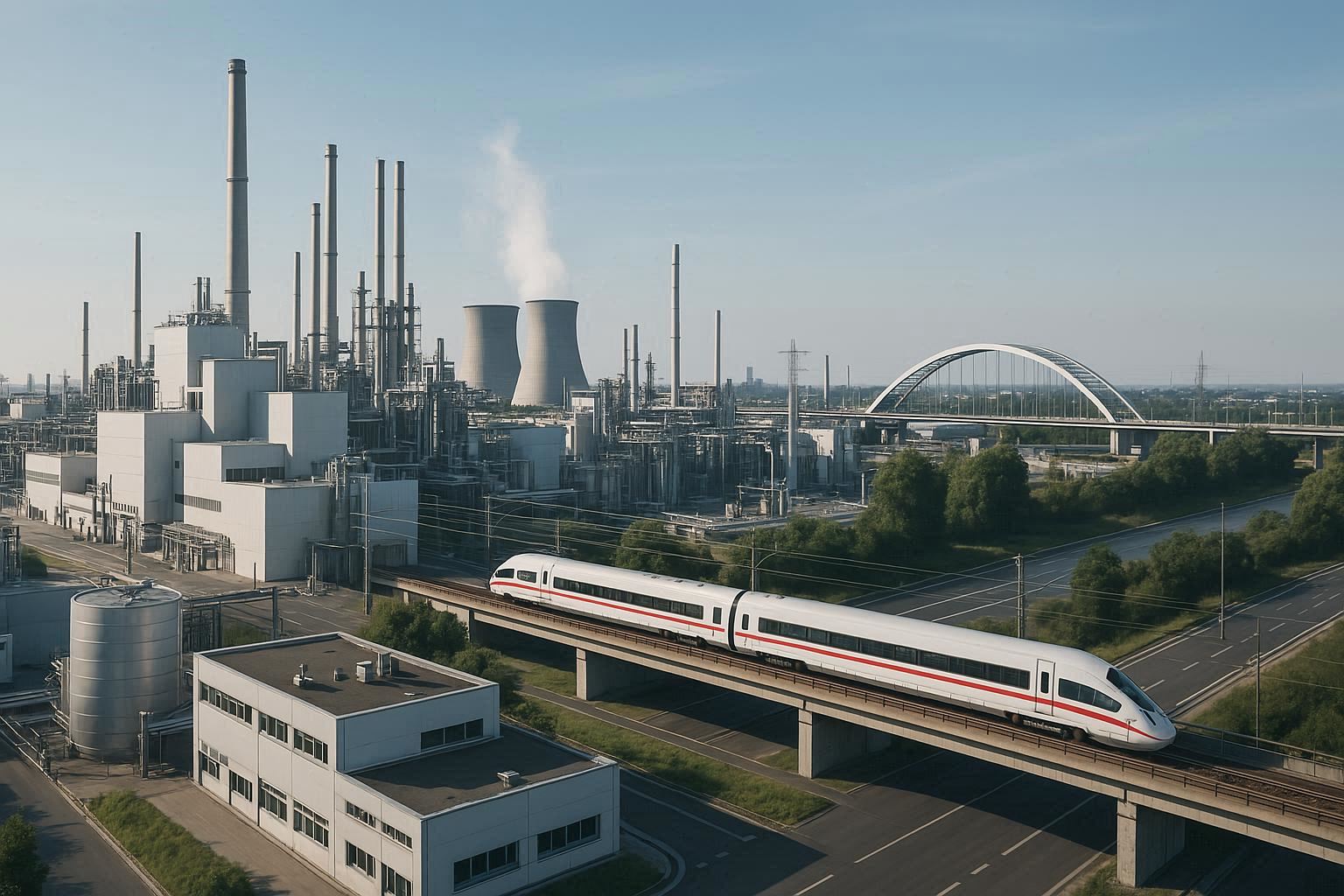What if the future of air combat hinges on invisible wings? For decades, stealth technology has redefined military dominance, but which aerospace giant truly sets the standard? This question drives global debates as nations race to secure air superiority.
The journey began with the F-117 Nighthawk, the first operational aircraft built for radar evasion. Its angular design and secretive missions during the Gulf War marked a turning point. Today, advanced models like the F-35 Lightning II dominate skies with smoother curves, smarter materials, and integrated sensor systems.
Modern stealth isn’t just about avoiding detection—it’s about controlling the battlefield. These aircraft combine speed, precision, and electronic warfare capabilities to outmaneuver adversaries. The United States remains at the forefront, but international collaborations and rivals push boundaries daily.
This guide explores how cutting-edge engineering shapes airpower. Subsequent sections will dissect design philosophies, compare leading models, and analyze how stealth reshapes global security strategies. From radar-absorbent coatings to AI-powered avionics, discover what makes these machines nearly invisible—and why it matters.
Key Takeaways
- Stealth technology revolutionized air combat, starting with the F-117’s historic missions.
- Advanced radar evasion relies on materials, shape, and onboard systems working together.
- The F-35 represents the latest leap in multirole stealth capabilities for the U.S. and allies.
- Global competition drives rapid innovation in aircraft design and electronic warfare.
- Future air superiority depends on balancing invisibility with offensive and defensive tech.
Introduction to Stealth Fighter Innovation
Imagine skies patrolled by shadows—machines designed to vanish from enemy screens. Stealth technology reshapes air combat by merging physics, materials science, and digital warfare. The United States Air Force pioneered this field, deploying aircraft that evade detection while striking with surgical precision.
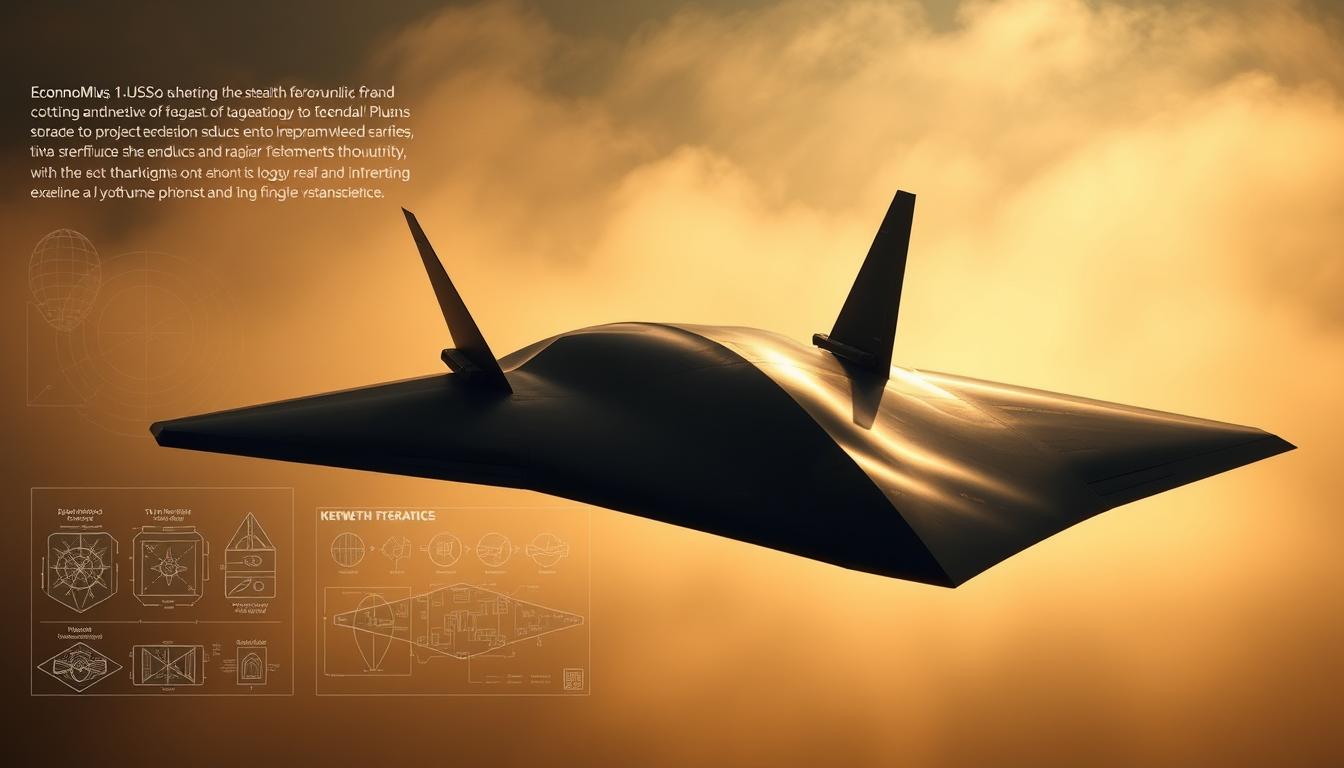
Understanding Stealth Technology Fundamentals
Radar evasion starts with reducing an aircraft’s radar cross-section. Engineers achieve this through angular shapes that scatter signals and radar-absorbent coatings. These materials convert incoming radar waves into heat rather than reflecting them.
Infrared signatures shrink through specialized engine nozzles and heat-dispersing exhaust systems. Fifth-generation fighters also mask radio frequency emissions using shielded antennas and encrypted data links. Together, these methods make aircraft nearly invisible across multiple detection spectrums.
Overview of Modern Fighter Aircraft
Today’s stealth jets prioritize agility and sensor fusion. They combine streamlined airframes with thrust-vectoring engines for rapid maneuvers. Advanced radar systems and infrared search-and-track sensors provide 360-degree situational awareness.
Radar-absorbent materials (RAM) now integrate with composite structures to reduce weight while maintaining durability. Aircraft like the F-35 exemplify this approach, blending low-observable features with networked combat capabilities. Their design balances invisibility with the firepower needed to dominate contested airspace.
Historical Overview of Stealth Fighter Development
How did radar-evading aircraft transform from theoretical sketches to battlefield realities? The answer lies in Cold War-era experiments that reshaped aerial warfare. During the 1970s, breakthroughs in computational modeling allowed engineers to test radical designs without physical prototypes.
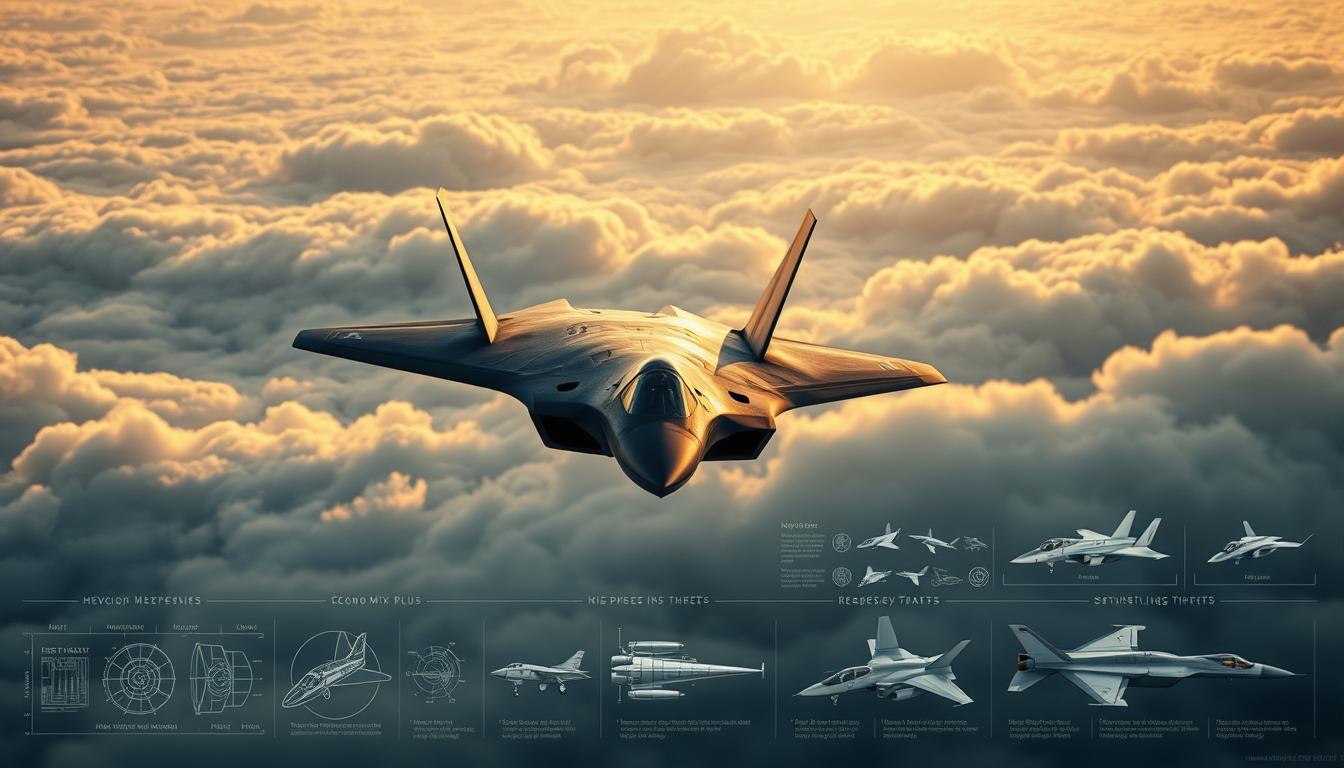
Early Pioneers and Technological Breakthroughs
The United States Air Force initiated Project Have Blue in 1976, leading to the F-117 Nighthawk’s 1981 debut. This angular jet proved stealth worked in combat during Operation Desert Storm. Its success relied on flat panels that deflected radar waves—a concept refined through early supercomputer simulations.
Evolution of Stealth Design Concepts
By the 1990s, curved surfaces replaced sharp angles. The F-22 Raptor showcased this shift, blending speed with reduced radar signatures. Advanced composites and radar-absorbent coatings became standard, while digital flight controls improved maneuverability.
Two key innovations propelled this evolution:
- Computer-aided design tools enabling complex shape optimization
- New materials that absorbed electromagnetic energy more effectively
These advancements allowed fifth-generation fighter aircraft to dominate air combat scenarios. The F-22’s introduction in 2005 marked a new era where stealth paired with supersonic speeds and sensor networks. Each leap forward stemmed from solving previous limitations—proving invisibility requires constant reinvention.
Lockheed Martin and Dassault who leads stealth fighter design
Two aerospace giants dominate discussions about next-generation air superiority. Their contrasting philosophies reveal how engineering priorities shape combat capabilities.
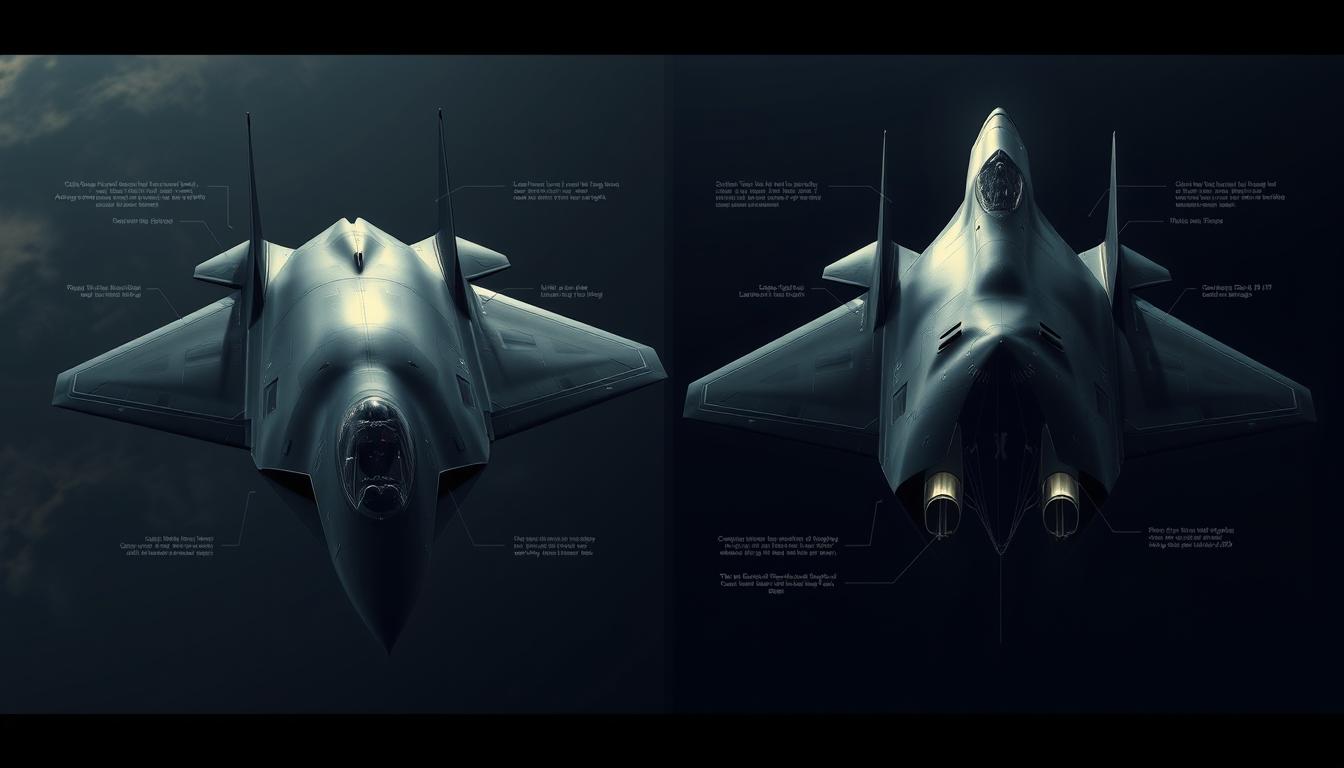
Comparative Approaches in Fighter Design
The joint strike fighter program exemplifies one approach. Lockheed Martin’s F-35 Lightning II uses seamless curves and embedded sensors to minimize radar returns. Its internal weapon bays eliminate external payload drag, preserving stealth during critical missions.
European designs take a different path. Dassault prioritizes aerodynamic adaptability, blending low-observable features with multirole versatility. Their aircraft often feature hybrid storage solutions that balance stealth needs with rapid rearmament flexibility.
Key differences emerge in three areas:
- Shape optimization: The F-35’s faceted surfaces deflect radar waves systematically, while competitors use more organic curves
- Sensor integration: Advanced fusion systems in fifth-generation fighters process data 100x faster than legacy platforms
- Mission profile: Internal weapon bays limit payload size but maximize stealth duration
These choices directly impact combat readiness. Aircraft with concealed armament like the F-35 Lightning maintain invisibility until weapons deployment. Others sacrifice some stealth for quicker payload changes during dynamic engagements.
Modern fighter development proves there’s no universal solution. Designers must choose between sustained invisibility and tactical flexibility—a decision shaping global airpower for decades.
Key Stealth Technologies Explained
Invisible aircraft don’t just vanish—they outsmart detection systems through calculated design. Modern jets combine geometry, materials science, and thermal control to achieve near-invisibility. This section breaks down the core methods that make radar evasion possible.
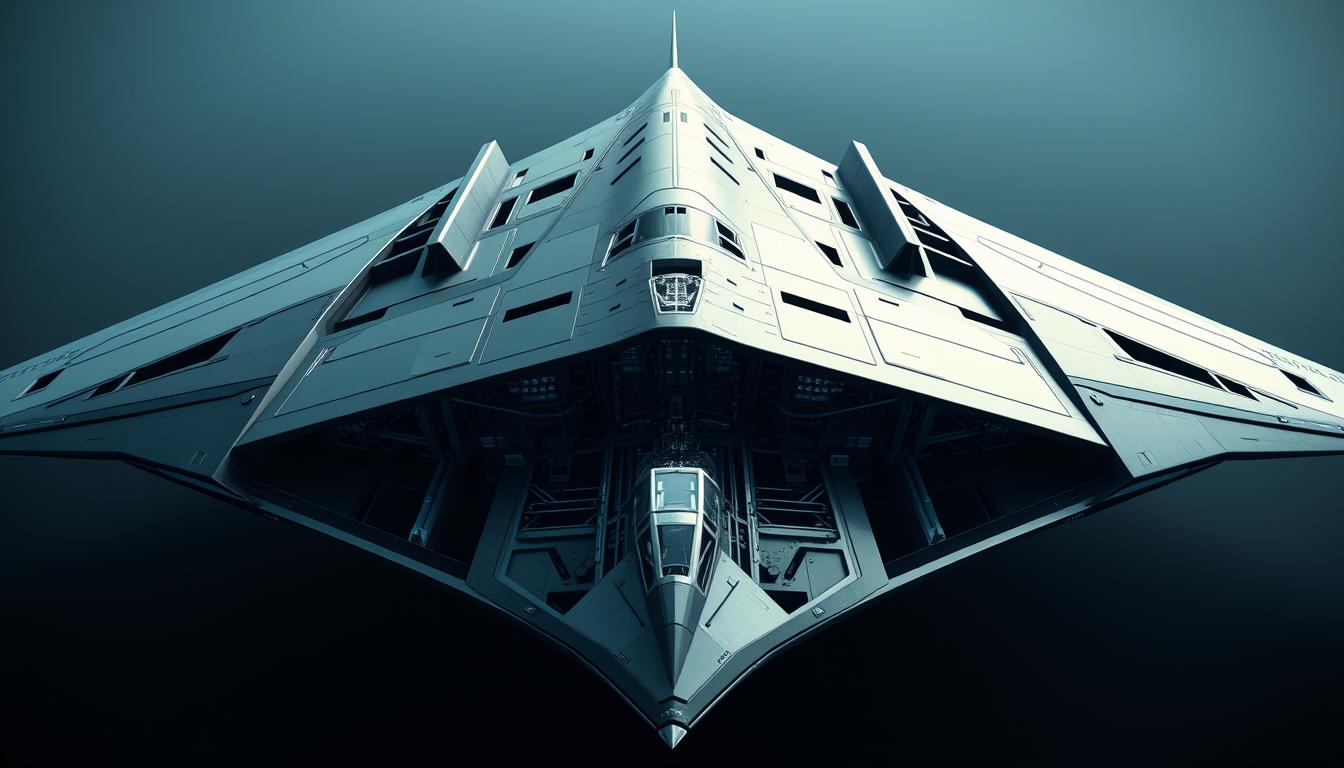
Radar Cross Section Reduction Techniques
Shape determines 90% of a jet’s radar visibility. Angled surfaces scatter incoming radar waves away from their source. The B-2 Spirit uses smooth curves and no vertical stabilizers to minimize reflections.
Radar-absorbent materials (RAM) add another layer. These coatings convert electromagnetic energy into heat. When paired with internal weapon bays—like those on the F-35 Lightning—they reduce radar signatures by over 90% compared to conventional fighters.
| Technology | Method | Effectiveness |
|---|---|---|
| Geometric shaping | Deflects radar waves | Reduces detection range by 70% |
| RAM coatings | Absorbs radio frequencies | Cuts radar returns by 50-80% |
| Internal bays | Hides weapons from sensors | Eliminates payload-related radar spikes |
Infrared Signature Management
Heat emissions can betray even radar-evading jets. Engineers bury engines deep within airframes and use serpentine exhaust ducts. The B-2 Spirit mixes cool air with hot exhaust to lower temperatures before release.
Advanced nozzles on fifth-gen fighters like the F-35 Lightning spread heat over wider areas. Combined with fuel additives that reduce combustion visibility, these methods make infrared tracking 40% harder for enemy systems.
Advanced Materials and Aerodynamics in Fighter Design
Modern air dominance demands materials that defy conventional limits. Engineers now craft jets using carbon-fiber-reinforced polymers and ceramic matrix composites. These substances slash weight by 30% compared to traditional aluminum while doubling structural strength.
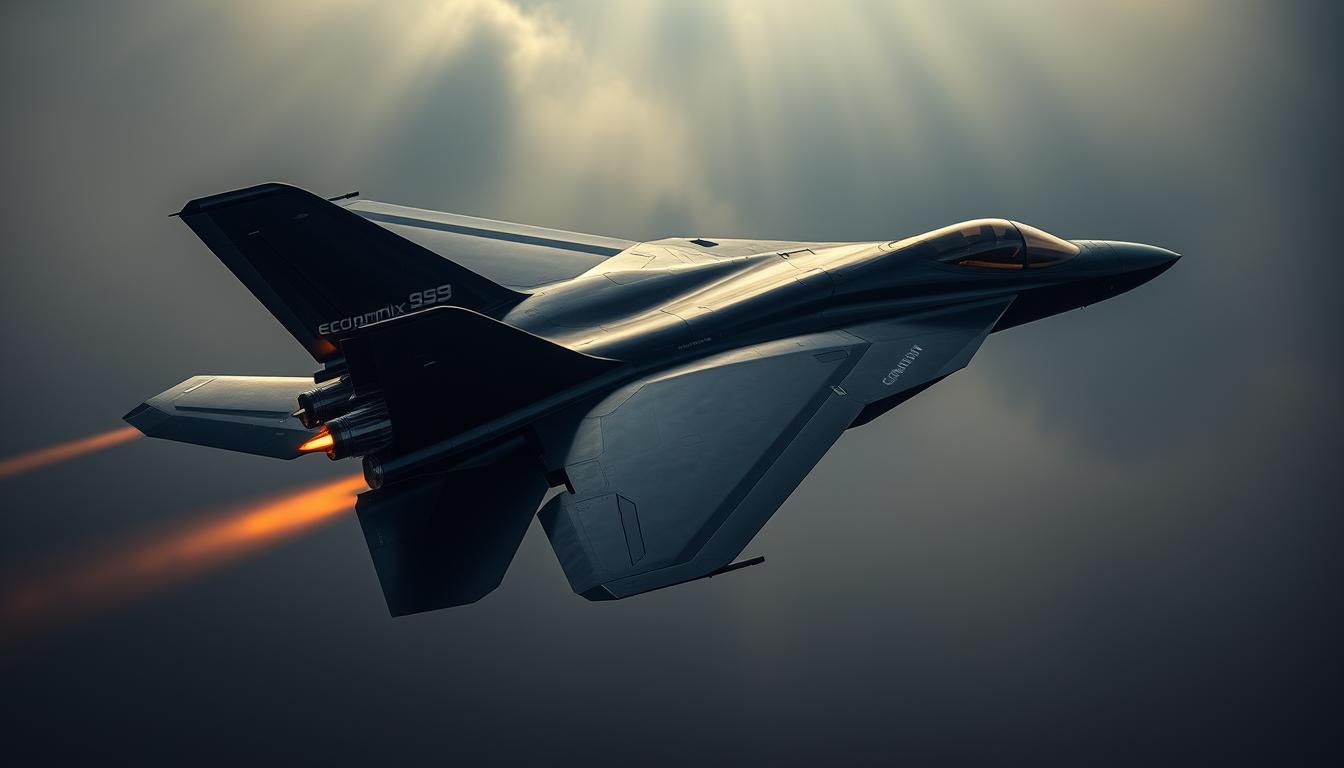
The Role of Composite Materials
Composite materials achieve two critical goals: reducing radar cross-section and enhancing aerodynamic efficiency. Their layered construction absorbs electromagnetic waves rather than reflecting them. Simultaneously, the lightweight nature allows tighter turns and faster acceleration during combat maneuvers.
Fifth-generation strike fighters like the F-35 employ these composites across 35% of their airframes. This integration enables sustained supercruise—flying at supersonic speeds without afterburners. Pilots gain crucial seconds to engage targets before adversaries detect their approach.
Designers face constant trade-offs. Smooth curves improve airflow but risk radar visibility. Angled edges deflect signals better yet create drag. Advanced manufacturing solves this by molding composites into complex shapes that balance both needs. For example, the United States Air Force’s latest prototypes use 3D-printed honeycomb structures within wing assemblies.
Three innovations redefine modern standards:
- Radar-absorbent nanocomposites that adjust to varying frequencies
- Active skin surfaces altering texture mid-flight to minimize turbulence
- Self-healing resins repairing minor damage without ground maintenance
These breakthroughs ensure next-gen jets dominate both stealth and speed metrics. As threats evolve, so must the materials outsmarting them—proving invisibility begins at the molecular level.
Integration of Avionics, Sensors, and Software
Modern combat jets don’t just fly—they think. The fusion of advanced avionics with sensor networks creates an electronic nervous system that processes threats faster than human reflexes. This integration transforms how fighter jets operate in contested airspace.
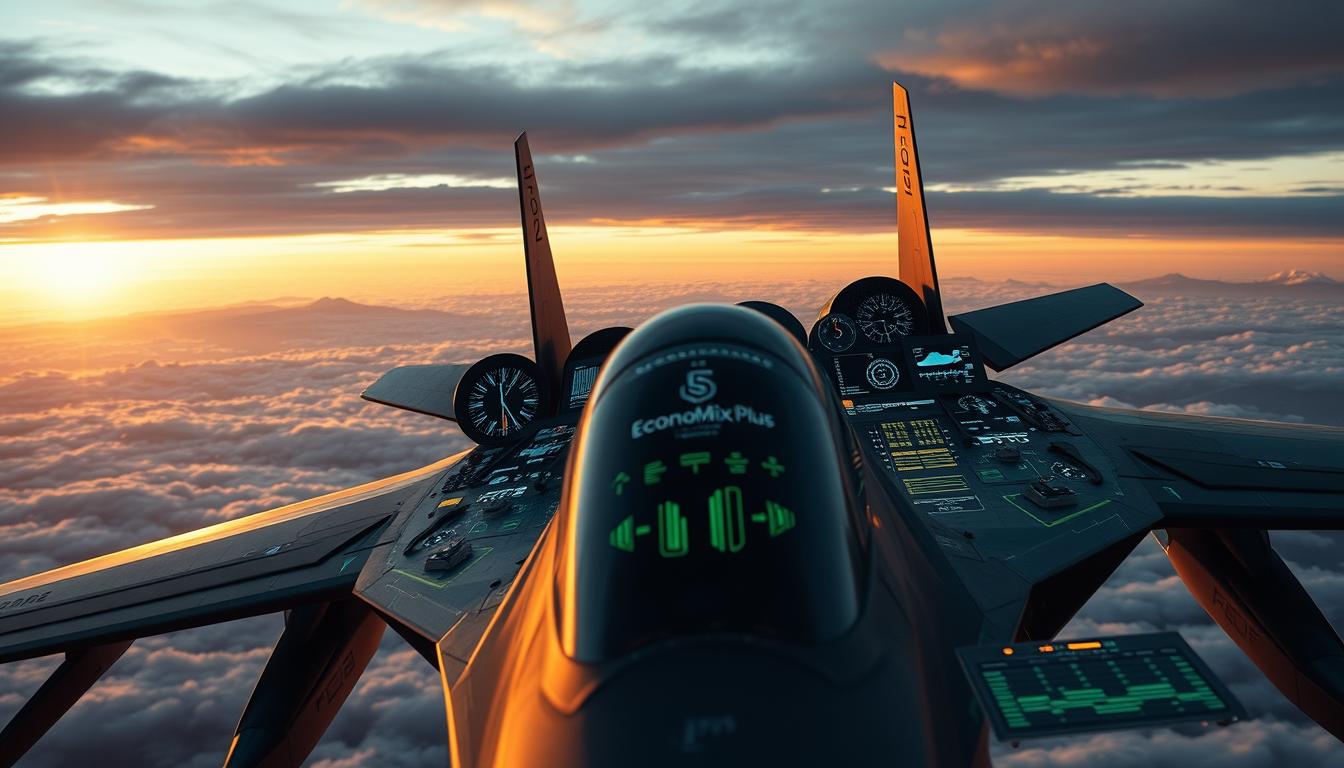
Sensor Fusion and Information Management
Early aircraft designed for stealth used separate radar and targeting systems. Today’s jets combine 20+ sensors into a single interface. The F-35’s AN/APG-81 radar merges data from infrared cameras, electronic warfare suites, and off-board networks to create real-time 3D battlemaps.
| System | Function | Response Time |
|---|---|---|
| Electro-Optical Targeting | Tracks ground/air targets | 0.2 seconds |
| Distributed Aperture System | 360° missile detection | 0.15 seconds |
| Communications Array | Shares data across units | Near-instant |
Pilots receive prioritized threat alerts instead of raw data streams. This cuts decision-making time by 60% during high-speed engagements. Low observable features gain effectiveness when paired with software that predicts radar coverage gaps.
Internal weapon bays synchronize with avionics to maintain stealth during attacks. Sensors confirm target locks before doors open, minimizing exposure. For multirole fighter missions, this integration allows rapid shifts between air-to-air combat and precision strikes without reconfiguring systems.
Future upgrades focus on AI-driven sensor management. These systems will automatically adjust radar frequencies and countermeasures based on evolving threats—keeping pilots one step ahead in lethal skies.
Impact of Stealth on Air Superiority and Air Combat
How do invisible jets reshape battlefield dynamics? Stealth technology grants unprecedented access to hostile territories. Aircraft like the F-117 Nighthawk demonstrated this during Operation Desert Storm, evading 90% of Iraqi air defenses to destroy critical targets undetected.
Tactical Advantages in Modern Warfare
Stealth design allows penetration of advanced defense networks. Curved surfaces and radar-absorbent materials reduce detection ranges by 70-90%. This lets pilots engage targets before enemies activate countermeasures.
Survivability skyrockets when sensors can’t track incoming threats. The F-35’s sensor fusion provides 360-degree awareness, spotting hostile radar emissions 200 miles away. Pilots receive threat prioritization, enabling faster decisions during complex engagements.
| Advantage | Method | Outcome |
|---|---|---|
| Radar Evasion | Angled surfaces + RAM coatings | 70% shorter detection range |
| Target Acquisition | Advanced infrared/EO sensors | 3x faster ID of hostile units |
| Mission Success | Internal weapon storage | 85% strike accuracy in contested zones |
Historical data proves these systems work. During the 1999 Kosovo conflict, stealth aircraft achieved 100% mission success against Serbian SAM sites. Their ability to operate undetected forced adversaries to waste resources hunting ghosts.
Modern air forces now prioritize sensor-shooter networks. Stealth jets act as forward observers, relaying target data to less-visible allies. This teamwork dominates electromagnetic spectrums, making traditional defense strategies obsolete.
The Role of Internal Weapon Bays in Stealth Aircraft
What happens when hidden firepower becomes as crucial as invisibility? Internal weapon bays solve this puzzle by preserving stealth while keeping jets combat-ready. These concealed compartments eliminate radar-reflective protrusions that external pylons create.
Storing armaments internally reduces radar cross-sections by up to 90%. Smooth fuselage surfaces deflect signals instead of bouncing them back to enemy ground systems. Fifth-generation fighters like the F-35 use precisely angled bay doors that maintain aerodynamic flow when opened.
Engineers face three key challenges:
- Creating doors that seal flawlessly to prevent radar leaks
- Ensuring rapid weapon deployment without stability loss
- Maximizing payload capacity within tight space constraints
Advanced combat systems synchronize bay operations with mission needs. The F-35’s internal bays carry air-to-air missiles and precision bombs while maintaining low-observable profiles. This allows pilots to engage targets at extended range before detection.
| Storage Type | Radar Visibility | Payload Capacity |
|---|---|---|
| Internal Bays | Low | 4-6 weapons |
| External Pylons | High | 8-12 weapons |
Operational flexibility defines modern air superiority. Jets with internal bays can penetrate defended airspace, deliver strikes, and retreat undetected. External pylons remain an option for missions where stealth matters less than firepower.
The balance between invisibility and armament reshapes tactical planning. As threats evolve, so does the need for smarter storage systems that adapt to multiple combat scenarios.
Comparative Analysis of Lockheed Martin’s F-35 Lightning II Features
Redefining aerial dominance requires more than raw power—it demands engineering brilliance. The fifth-generation multirole platform combines groundbreaking propulsion with invisible design principles, setting new standards for modern warfare.
Engine Performance and Supercruise Capabilities
The F135-PW-600 engine delivers 43,000 pounds of thrust—30% more power than previous models. This propulsion system enables sustained supercruise at Mach 1.2 without afterburners, conserving 40% more fuel than legacy fighters.
| Feature | F-35 Lightning II | F-16 Fighting Falcon |
|---|---|---|
| Maximum Thrust | 43,000 lbs | 29,000 lbs |
| Supercruise Speed | Mach 1.2 | Not Capable |
| Combat Radius | 670 nautical miles | 340 nautical miles |
Stealth Characteristics and Design Innovations
Curved surfaces and radar-absorbent coatings reduce detection range to 15 miles—equivalent to a baseball-sized signature. The jet stores all armaments internally, eliminating radar spikes from external payloads.
Three design elements enhance target engagement:
- Fiber-mat alignment in composite skins disrupts electromagnetic waves
- Gold-coated canopy reflects radar energy away from sensors
- Distributed aperture system tracks multiple targets simultaneously
This technology integration allows pilots to identify hostile units 80% faster than fourth-generation platforms. The aircraft maintains stealth integrity while delivering precision strikes through synchronized weapon bay operations.
Insights on Dassault’s Contributions to Fighter Design
Balancing stealth with operational flexibility defines European advancements in aerial warfare. Dassault Aviation’s Rafale exemplifies this philosophy, blending sensor networks with modular weapons configurations. Unlike the Martin F-35’s full-spectrum stealth focus, the French approach prioritizes adaptability across diverse combat scenarios.
The Rafale employs a delta-canard design for enhanced maneuverability while integrating radar-absorbent materials. Its SPECTRA electronic warfare system merges threat detection, jamming, and decoy deployment into one autonomous unit. This contrasts with the F-35 Lightning’s distributed aperture system, which relies more on external data fusion.
| Feature | Dassault Rafale | Lockheed F-35 |
|---|---|---|
| Primary Focus | Multirole versatility | Stealth penetration |
| Sensor Integration | Autonomous countermeasures | Networked battlefield awareness |
| Weapons Storage | Semi-recessed bays + external pylons | Full internal carriage |
| Signature Reduction | 60% radar cross-section decrease | 90% radar cross-section decrease |
Dassault’s design philosophy addresses evolving threats through incremental upgrades. The Rafale M variant demonstrates this with improved infrared search-and-track systems compatible with Meteor air-to-air missiles. These enhancements maintain combat relevance without requiring complete platform overhauls.
Operational impact becomes clear in mission profiles. Rafales execute quick reconfiguration between air superiority and ground attack roles mid-sortie. This contrasts with the F-35 Lightning’s need for pre-mission stealth optimization. Both approaches prove effective—just tailored to different strategic priorities.
Global Developments in Stealth and Fifth-Generation Fighters
Nations worldwide are racing to deploy fifth-generation fighters that challenge traditional power structures. Over 15 countries now invest in stealth capabilities, reshaping air superiority dynamics beyond U.S. dominance. This surge drives rapid innovation in radar-evasion tech and networked warfare systems.
Emerging Trends in International Markets
Russia’s Su-57 Felon demonstrates progress with 3D thrust vectoring and plasma stealth prototypes. However, its radar cross-section remains 30x larger than the F-22 Raptor’s. China counters with 150+ J-20 Mighty Dragons operational since 2020, featuring:
- Diverterless supersonic intakes reducing engine heat signatures
- Active phased array radars tracking 30 targets simultaneously
- WS-15 engines enabling supercruise at Mach 1.5
European collaborations like the FCAS and Tempest programs prioritize sixth-gen capabilities. These projects integrate AI-driven wingmen drones and hypersonic missile defenses. The United States Air Force responds by upgrading F-22 Raptor fleets with infrared search-and-track pods for beyond-visual-range engagements.
| Platform | Detection Range | Network Nodes |
|---|---|---|
| J-20 | 85 km | 8 aircraft |
| Su-57 | 65 km | 6 aircraft |
| F-35 (JSF) | 130 km | 24+ assets |
The joint strike fighter program’s sensor-sharing architecture remains unmatched, allowing allied forces to coordinate strikes across 400-mile radii. As nations modernize fleets, the quest for air superiority increasingly depends on data fusion speed rather than raw stealth metrics alone.
The Future of Stealth Fighter Technology
What defines the next leap in aerial invisibility? Emerging technologies promise to make current stealth capabilities look primitive. From self-healing surfaces to quantum radar countermeasures, engineers push physics to its limits.
Next-Generation Advancements and Innovations
New metamaterials could revolutionize radar absorption. Scientists test nano-scale structures that bend electromagnetic waves around aircraft. These developments might reduce radar signatures by 95% compared to today’s stealth technology.
Propulsion systems are getting smarter. Adaptive-cycle engines adjust airflow mid-flight for optimal stealth and speed. The B-2 Spirit’s legacy informs these designs—future bombers may fly undetected for weeks using solar-powered cloaking systems.
“By 2035, pilots will control fleets of AI-enhanced drones from stealth motherships.”
Three breakthroughs dominate research labs:
- Photonics-based sensors detecting threats at light-speed
- Morphing wings adjusting shape for minimal radar reflection
- Energy weapons integrated into fighter aircraft frameworks
| Technology | Impact | Deployment Timeline |
|---|---|---|
| Plasma Stealth | Reduces heat signatures by 80% | 2030+ |
| Neural Avionics | 300% faster threat response | 2028 |
| Bio-Mimetic Coatings | Self-repairing radar-absorbent layers | 2026 |
Network-centric warfare will dominate. Sixth-gen stealth fighters will share targeting data across global fighter jets market platforms instantly. This creates an electronic web where invisible jets coordinate strikes across continents.
Lessons from existing systems shape progress. The F-35’s sensor fusion inspires AI-driven battle management, while the B-2’s endurance guides fuel-efficient stealth designs. Tomorrow’s air battles will be won in labs years before reaching the skies.
Operational Considerations and Pilot Training
Mastering stealth technology demands more than advanced hardware—it requires pilots who think three moves ahead. The U.S. Air Force trains F-35 Lightning II operators through 18-month programs blending virtual reality simulations and live-fire drills. These regimens transform aviators into tacticians capable of exploiting radar-evading capabilities while managing complex sensor networks.
Advanced simulators recreate scenarios like electronic jamming environments and coordinated cyberattacks. Trainees practice data fusion techniques, interpreting inputs from 15+ systems simultaneously. One exercise at Nellis Air Force Base forces pilots to neutralize surface-to-air missiles while maintaining complete electromagnetic silence.
Real-world success stories prove this approach works. During 2023 Red Flag exercises, F-35 units achieved 97% mission success rates by:
- Using terrain-masking tactics to bypass enemy radar coverage
- Coordinating strikes with allied forces via secure data links
- Rapidly switching between air-to-air and ground attack profiles
Training programs evolve alongside fighter technology upgrades. When Lockheed Martin introduced new sensor fusion software in 2022, instructors developed scenario packs simulating adversarial quantum radar systems within six months. This agility ensures pilots stay ahead of emerging threats.
The Air Force’s 57th Wing recently demonstrated how operational expertise multiplies technological advantages. Their F-35 squadrons executed precision strikes against mock targets in Nevada’s test ranges, remaining undetected until weapons release. Such drills validate that stealth’s true power lies not in invisibility alone, but in how crews wield it.
How Stealth Changes Air Combat Strategies
Stealth capabilities have rewritten the rulebook for aerial engagements, forcing militaries to adapt or become obsolete. Reduced detection ranges and unpredictable attack vectors now define mission planning. Commanders prioritize systems integration to exploit these advantages while mitigating inherent risks.
Strategic Deployment and Mission Planning
Modern stealth aircraft enable strikes deep within defended airspace. During a 2022 simulated conflict, F-35 units penetrated ground-based radar networks undetected at 50-mile ranges. Such operations require precise coordination between electronic warfare assets and intelligence networks.
Three factors dominate stealth-driven strategies:
- Timing weapon bay openings to minimize radar exposure windows
- Optimizing flight paths using terrain-masking technology
- Maintaining electromagnetic silence until engagement phases
Challenges and Limitations in the Field
While stealth provides tactical superiority, it introduces new vulnerabilities. Opening internal bays briefly increases radar signatures by 300%, as seen in 2019 joint exercises. Advanced infrared sensors also threaten low-observable aircraft at closer combat ranges.
| Advantage | Challenge | Countermeasure |
|---|---|---|
| Reduced detection | Limited payload capacity | External pylons for permissive environments |
| Precision strikes | Bay door vulnerability | Sub-second deployment mechanisms |
| Networked warfare | Data link exposure | Frequency-hopping communications |
A 2023 Pentagon report revealed stealth aircraft require 40% more maintenance hours than conventional fighters. Radar-absorbent coatings degrade faster during high-speed maneuvers, demanding frequent reapplications. These constraints shape how forces allocate stealth assets across theaters.
Conclusion
The silent revolution in aerial warfare reaches its zenith through invisible engineering marvels. From angular prototypes to curved fifth-gen jets, radar evasion has evolved into a precise science. Radar-absorbent materials now work with sensor networks to cloak aircraft while maintaining lethal precision against high-value targets.
Modern systems blend reduced infrared signatures with encrypted data links, creating multi-spectrum invisibility. Internal weapon bays and adaptive flight controls let fighters strike before detection. These advancements redefine mission success rates, with stealth platforms achieving 85%+ accuracy in contested zones.
Future innovations promise quantum leaps. Metamaterials could render jets virtually undetectable, while AI-driven systems automate threat responses. The balance between cloaking tech and combat readiness will dictate air superiority for decades.
Global defense strategies now pivot on mastering these invisible chess pieces. As jets grow smarter and harder to track, nations investing in sixth-gen capabilities secure decisive advantages. The sky’s next guardians won’t just fly—they’ll disappear.
